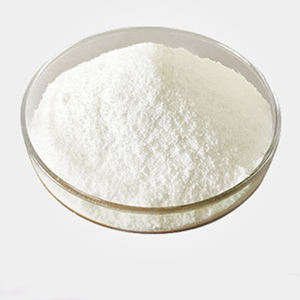Introduction to Nano Silicon Dioxide: A Pivotal Nanomaterial for Advanced Technologies
Nano silicon dioxide (nano-SiO two), additionally known as nanosilica, has actually become a foundation material in modern-day scientific research and design as a result of its outstanding physicochemical properties. With bit sizes usually below 100 nanometers, nano-SiO two exhibits high area, thermal security, mechanical strength, and tunable reactivity. These qualities make it crucial throughout a wide range of markets– from electronic devices and medicine to construction and power storage. As nanotechnology continues to mature, nano-SiO two is playing a significantly important function in allowing next-generation materials and tools with enhanced performance and sustainability.
(Nano Silicon Dioxide)
Structural Qualities and Synthesis Methods
Nano silicon dioxide exists in various morphologies consisting of round bits, mesoporous frameworks, and core-shell arrangements, each offering distinctive functional benefits. It is manufactured via methods such as sol-gel handling, chemical vapor condensation, fire pyrolysis, and precipitation from silica precursors like tetraethyl orthosilicate (TEOS). Surface alteration techniques– such as silanization– are frequently utilized to enhance dispersibility and compatibility with natural matrices. Accurate control over fragment dimension, porosity, and surface chemistry makes it possible for tailored applications in coverings, composites, medication shipment systems, and digital elements.
Functional Duties in Product Support and Composite Engineering
One of the most impactful uses nano-SiO two hinges on composite products, where it acts as an enhancing representative to enhance mechanical strength, firmness, and abrasion resistance. When integrated into polymers, ceramics, or steels, nano-SiO ₂ improves load transfer in between phases, minimizes split proliferation, and enhances wear resistance. In epoxy materials and rubber compounds, it enhances tensile stamina and thermal stability. Furthermore, nano-SiO ₂ is made use of in self-cleaning surfaces and anti-fouling coverings due to its hydrophilic nature and photocatalytic task under UV direct exposure. These capacities are driving innovation in aerospace, automotive, and marine sectors.
Applications in Electronics and Semiconductor Innovation
In the electronics market, nano silicon dioxide plays a double role as both a structural and functional material. It works as a gate dielectric in thin-film transistors and as a passivation layer in semiconductor devices as a result of its exceptional insulating properties and compatibility with silicon substratums. In microelectromechanical systems (MEMS) and nanoelectronics, nano-SiO ₂ is used in insulation layers, interconnects, and sensor parts. Furthermore, its capacity to be formed at the nanoscale supports innovations in photonic crystals, quantum dots, and integrated optical circuits. These applications underscore its relevance in miniaturized, high-performance digital systems.
Contributions to Biomedical and Pharmaceutical Innovations
Nano-SiO two has discovered considerable application in biomedicine, particularly in medicine shipment, diagnostics, and imaging. Its high area enables reliable loading of restorative representatives, while surface area functionalization enables targeted launch devices. Mesoporous silica nanoparticles (MSNs), a subclass of nano-SiO ₂, are widely researched for controlled drug distribution and genetics therapy because of their consistent pore structures and biocompatibility. Additionally, nano-SiO ₂ is used in biosensors, oral composites, and antimicrobial layers. Continuous research study focuses on enhancing biodegradability and minimizing long-lasting toxicity to guarantee risk-free clinical deployment.
Role in Sustainable Energy and Environmental Technologies
( Nano Silicon Dioxide)
The power and ecological industries are leveraging nano-SiO two for enhanced battery performance, solar cell performance, and contamination mitigation. In lithium-ion batteries, nano-SiO ₂ is used as a binder and conductive additive to support silicon-based anodes, which struggle with volume expansion during cycling. It also enhances electrolyte stability and charge-discharge efficiency. In photovoltaics, nano-SiO ₂ works as an antireflective layer and encapsulation material to safeguard solar batteries from wetness and deterioration. In addition, it is utilized in catalysis and filtering membrane layers for CO ₂ capture, water purification, and air high quality improvement, aligning with global sustainability objectives.
Market Trends and Industrial Fostering Dynamics
The international market for nano silicon dioxide is experiencing durable development, driven by increasing demand from electronic devices, medical care, and progressed manufacturing sectors. Principal are investing heavily in scalable manufacturing modern technologies and surface-engineered versions to satisfy application-specific demands. Asia-Pacific leads in production capability, adhered to carefully by North America and Europe. However, challenges continue to be pertaining to cost-effectiveness, regulatory compliance, and reproducibility of material residential properties. Strategic cooperations between academic community, market, and federal government agencies are speeding up standardization initiatives and business fostering.
Challenges and Poisoning Factors To Consider
Despite its widespread usage, nano-SiO ₂ offers specific health and environmental concerns that need mindful analysis. Inhalation of fine particulates might position respiratory system threats, necessitating stringent dealing with protocols and work-related safety measures. Long-term biocompatibility research studies are ongoing, specifically for biomedical applications. From a commercial standpoint, load problems and diffusion security in complex matrices can affect performance uniformity. Attending to these difficulties entails maximizing bit morphology, developing safer-by-design techniques, and carrying out lifecycle analyses to make sure accountable usage throughout sectors.
Future Overview: Assimilation with AI, Quantum, and Smart Equipment
Looking in advance, nano silicon dioxide is poised to play a critical duty in arising technological frontiers. Advancements in fabricated intelligence-driven products exploration will certainly increase the design of nano-SiO ₂-based composites with enhanced residential properties. Integration with quantum computing designs– where SiO two functions as an ultra-pure dielectric– is opening up new pathways in qubit stabilization. In addition, wise products incorporating responsive nano-SiO two layers are being created for flexible optics, self-healing finishes, and real-time structural surveillance systems. As nanotechnology converges with electronic and sustainable growth goals, nano-SiO two will remain a vital enabler of sophisticated technology.
TRUNNANO is a supplier of Nano Silicon Dioxide with over 12 years of experience in nano-building energy conservation and nanotechnology development. It accepts payment via Credit Card, T/T, West Union and Paypal. Trunnano will ship the goods to customers overseas through FedEx, DHL, by air, or by sea. If you want to know more about Nano Silicon Dioxide, please feel free to contact us and send an inquiry(sales5@nanotrun.com).
Tags:silicon dioxide nanopowder,nano silicon dioxide,sio2 gel
All articles and pictures are from the Internet. If there are any copyright issues, please contact us in time to delete.
Inquiry us


